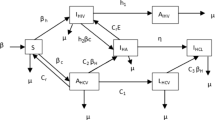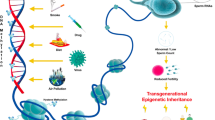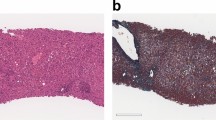Abstract
Vertical hepatitis B virus (HBV) transmission is defined as transmission that occurs during pregnancy or postpartum from an HBV-infected mother to her fetus or child. It is an efficient route for the spread of HBV and is responsible for most of the cases of chronic HBV infection in adults. During pregnancy, vertical transmission can occur in the intrauterine phase, by placental infection via peripheral blood mononuclear cells, by placental leakage, or through female germ cells.
The detection of HBV DNA in semen and spermatids from HBV-infected men has provided strong evidence that the male genital tract may act as a reservoir of the virus in HBV-infected men, supporting the possibility that vertical HBV transmission from an HBV-infected father to his child may also occur via the germ line at the time of fertilization, as occurs in HBV transmission from mother to child. Furthermore, it has been shown that integration of the HBV genome into the sperm cell genome can compromise sperm morphology and function and even cause hereditary or congenital biological effects in the offspring when an HBV-infected sperm fuses with an ovum.
Since vertical HBV transmission from father to child can be a topic of interest and of global importance for controlling the spread of HBV, this article addresses the evidence supporting its occurrence via germ cells, the biological impact of integration of the HBV genome into the male germ cell genome, and the role of maternal immunoprophylaxis in vertical HBV transmission from father to child.
Similar content being viewed by others
Change history
23 June 2022
Given name\Family name of author Robério Amorim de Almeida Pondé updated.
References
Ma L, Alla NR, Li X, Mynbaev OA, Shi Z (2014) Mother-to-child transmission of HBV: review of current clinical management and prevention strategies. Rev Med Virol 24(6):396–406. https://doi.org/10.1002/rmv.1801
Liu JF, Chen TY, Zhao YR (2021) Vertical transmission of hepatitis B virus: propositions and future directions. Chin Med J (Engl). 11;134(23):2825–2831. doi: https://doi.org/10.1097/CM9.0000000000001800
Umar M, Hamama-Tul-Bushra, Umar S, Khan HA (2013) HBV perinatal transmission. Int J Hepatol. 2013:875791. doi: https://doi.org/10.1155/2013/875791
Schweitzer A, Horn J, Mikolajczyk RT, Krause G, Ott JJ (2015) Estimations of worldwide prevalence of chronic hepatitis B virus infection: a systematic review of data published between 1965 and 2013. Lancet 386:1546–1555 [PMID]: 26231459 DOI: https://doi.org/10.1016/S0140-6736(15)61412-X
Shimakawa Y, Lemoine M, Njai HF et al (2016) Natural history of chronic HBV infection in West Africa: a longitudinal population-based study from The Gambia. Gut 65:2007–2016. https://doi.org/10.1136/gutjnl-2015-309892
Mavilia MG, Wu GY (2017) Mechanisms and prevention of vertical transmission in chronic viral hepatitis. J Clin Transl Hepatol 5(2):119–129. https://doi.org/10.14218/JCTH.2016.00067
Veronese P, Dodi I, Esposito S, Indolfi G (2021) Prevention of vertical transmission of hepatitis B virus infection. World J Gastroenterol 27(26):4182–4193
Pattyn J, Hendrickx G, Vorsters A, Van Damme P (2021) Hepatitis B Vaccines. J Infect Dis. 30;224(12 Suppl 2):S343-S351. doi: https://doi.org/10.1093/infdis/jiaa668
Jacobson IM, Brown RS Jr, McMahon BJ, Perrillo RP, Gish R (2022) An Evidence-based Practical Guide to Vaccination for Hepatitis B Virus. J Clin Gastroenterol 56(6):478–492. https://doi.org/10.1097/MCG.0000000000001695
Chang MS, Nguyen MH (2017) Epidemiology of hepatitis B and the role of vaccination. Best Pract Res Clin Gastroenterol 31(3):239–247. https://doi.org/10.1016/j.bpg.2017.05.008
WHO (2022) https://www.who.int/news-room/fact-sheets/detail/hepatitis-b
Hadchouel M, Scotto J, Huret JL, Molinie C, Villa E, Degos F, Brechot C (1985) Presence of HBV DNA in spermatozoa: a possible vertical transmission of HBV via the germ line. J Med Virol 16:61–66
Xu X, Wang L, Lin XM (1992) The possible role of sperm in family HBV infection. Chin J Epidemiol 13:337–339
Zhao LS, Liu XS, Zhang ZX et al (1998) Study on HBV vertical transmission via infected spermatozoa. Chin J Dis 16:154–157
Blumberg BS (1977) Australia antigen and the biology of hepatitis B. Science 197:17–25
Qian WP, Tan YQ, Chen Y et al (2005) Rapid quantification of semen hepatitis B virus DNA by real-time polymerase chain reaction. World J Gastroenterol 14(34):5385–5389. https://doi.org/10.3748/wjg.v11.i34.5385
Ali BA, Huang TH, Salem HH, Xie QD (2006) Expression of hepatitis B virus genes in early embryonic cells originated from hamster ova and human spermatozoa transfected with the complete viral genome. Asian J Androl 8(3):273–279. https://doi.org/10.1111/j.1745-7262.2006.00141.x
Cai QX, Zhu YY (2013) Is hepatitis B virus transmitted via the male germ line? A seroepidemiological study in fetuses. Int J Infect Dis 17(1):e54-8. doi: https://doi.org/10.1016/j.ijid.2012.09.002. PMID: 23154176
Genteli I, Borgia G (2014) Vertical transmission of hepatitis B virus: challenges and solutions. Int J Womens Health 6:605–611. https://doi.org/10.2147/IJWH.S51138
Frickmann H, Zautner AE, Moter A, Kikhney J, Hagen RM, Stender H, Poppert S (2017) Fluorescence in situ hybridization (FISH) in the microbiological diagnostic routine laboratory: a review. Crit Rev Microbiol 43(3):263–293. https://doi.org/10.3109/1040841X.2016.1169990
Junca AM, Plachot M, Mandelbaum J (1983) Evaluation of human sperm fertility by interspecific (human spermatozoa-hamster oocytes) in vitro fertilization. Acta Eur Fertil 14(3):191–196
Kadze R, Chan PJ, Jacobson JD, Corselli JU, King A (2002) Temperature variable and the efficiency of sperm mediated transfection of HPV16 DNA into cells. Asian J Androl 4:169–173
Zhong Y, Liu DL, Ahmed MMM et al (2018) Transcription and regulation of hepatitis B virus genes in host sperm cells. Asian J Androl 20(3):284–289. https://doi.org/10.4103/aja.aja_46_17
Huang JM, Huang TH, Qiu HY, Fang XW, Zhuang TG, Liu HX, Wang YH, Deng LZ, Qiu JW et al (2003) Effects of hepatitis B virus infection on human sperm chromosomes. World J Gastroenterol 9(4): 736–740
Nie R, Jin L, Zhang H, Xu B, Chen W, Zhu G (2011) Presence of hepatitis B virus in oocytes and embryos: a risk of hepatitis B virus transmission during in vitro fertilization. Fertil Steril 95(5):1667–1671. https://doi.org/10.1016/j.fertnstert.2010.12.043
Wang S, Peng G, Li M, Xiao H, Jiang P, Zeng N, Wang Z (2003) Identification of hepatitis B virus vertical transmission from father to fetus by direct sequencing. Southeast Asian J Trop Med Public Health 34(1):106–113
Wang S, Jiang P, Peng G (1999) [HBV transmission from father to foetus and HBV DNA in tissues outside the liver]. Zhonghua Gan Zang Bing Za Zhi 7(4):203–206
Wang SS, Li WL, Peng GF et al (2003) [The analysis of S gene phylogenetic tree of HBV in transmission from father to infant]. Zhonghua Yi Xue Za Zhi 83(6):451–454
Tajiri H, Tanaka Y, Kagimoto S, Murakami J, Tokuhara D, Mizokami M (2007) Molecular evidence of father-to-child transmission of hepatitis B virus. J Med Virol 79(7):922–926. https://doi.org/10.1002/jmv.20916
Ye F, Lin SM, Jin Y et al (2013) [Relationship between the expression of HBV mRNA in embryos and father-to-infant HBV transmission]. Zhonghua Nan Ke Xue 19(5):429–433
Kong Y, Liu Y, Liu X et al (2017) Relationship between the mechanism of hepatitis B virus father-infant transmission and pregnancy outcome. Arch Gynecol Obstet 295(1):253–257. https://doi.org/10.1007/s00404-016-4231-6
Song Y, Shou S, Guo H, Gao Z, Liu N, Yang Y, Wang F, Deng Q, Liu J, Xie Y (2022) Establishment and characterization of a new cell culture system for hepatitis B virus replication and infection. Virol Sin 37(4):558–568. https://doi.org/10.1016/j.virs.2022.05.002
Yu MM, Gu XJ, Xia Y et al (2012) Relationship between HBV cccDNA expression in the human ovary and vertical transmission of HBV. Epidemiol Infect 140:1454–1460
Zhang SL, Yue YF, Bai GQ, Shi L, Jiang H (2004) Mechanism of intrauterine infection of hepatitis B virus. World J Gastroenterol 10(3):437–438
Bai H, Zhang L, Ma L, Dou XG, Feng GH, Zhao GZ (2007) Relationship of hepatitis B virus infection of placental barrier and hepatitis B virus intra-uterine transmission mechanism. World J Gastroenterol 13(26):3625–3630
Mak JSM, Lao TT, Leung MBW, Chung CHS, Chung JPW, Cheung LP, Li TC (2020) Ovarian HBV replication following ovulation induction in female hepatitis B carriers undergoing IVF treatment: A prospective observational study. J Viral Hepat 27(2):110–117. https://doi.org/10.1111/jvh.13210
Ye F, Yue Y, Li S et al (2006) Presence of HBsAg, HBcAg, and HBVDNA in ovary and ovum of the patients with chronic hepatitis B virus infection. Am J Obstet Gynecol 194:387–392. https://doi.org/10.1016/j.ajog.2005.07.011
Chen LZ, Fan XG, Gao JM (2005) Detection of HBsAg, HBcAg, and HBV DNA in ovarian tissues from patients with HBV infection. World J Gastroenterol 11:5565–5567. https://doi.org/10.3748/wjg.v11.i35.5565
Kong Y, Ye F, Jin Y, Shi J, Qiu H, Lin S (2016) Hepatitis b virus expression and replication in ovum and the influencing factors. Saudi J Gastroenterol 22:215–219. https://doi.org/10.4103/1319-3767.182456
Xu X (1992) [The possible role of sperm in family HBV infection]. Zhonghua Liu Xing Bing Xue Za Zhi 13(6):337–339 Chinese
Zhao LS, Liu XS, Zhang ZX et al (1998) Study on HBV vertical transmission via infected spermatozoa. Chin J Dis 16:154–157
Lorusso F, Palmisano M, Chironna M et al (2010) Impact of chronic viral diseases on semen parameters. Andrologia 42:121–126
Qian L, Li Q, Li H (2016) Effect of hepatitis B virus infection on sperm quality and oxidative stress state of the semen of infertile males. Am J Reprod Immunol 76(3):183–185. https://doi.org/10.1111/aji.12537
Karamolahi S, Yazdi RS, Zangeneh M, Makiani MJ, Farhoodi B, Gilani MAS (2019) Impact of hepatitis B virus and hepatitis C virus infection on sperm parameters of infertile men. Int J Reprod Biomed 17(8):551–556. https://doi.org/10.18502/ijrm.v17i8.4820
Lee VC, Ng EH, Yeung WS, Ho PC (2010) Impact of positive hepatitis B surface antigen on the outcome of IVF treatment. Reprod Biomed Online 21:712–717
Oger P, Yazbeck C, Gervais A et al (2011) Adverse effects of hepatitis B virus on sperm motility and fertilization ability during IVF. Reprod Biomed Online 23:207–212
Zhou XP, Hu XL, Zhu YM, Qu F, Sun SJ, Qian YL (2011) Comparison of semen quality and outcome of assisted reproductive techniques in Chinese men with and without hepatitis B. Asian J Androl 13(3):465–469. https://doi.org/10.1038/aja.2010.164
Wang Z, Liu W, Zhang M, Wang M, Wu H, Lu M (2021) Effect of Hepatitis B Virus Infection on Sperm Quality and Outcomes of Assisted Reproductive Techniques in Infertile Males. Front Med (Lausanne) 8:744350. https://doi.org/10.3389/fmed.2021.744350
Ye F, Lin SM, Jin Y et al (2013) [Relationship between the expression of HBV mRNA in embryos and father-to-infant HBV transmission]. Zhonghua Nan Ke Xue 19(5):429–433
Ye F, Liu Y, Jin Y et al (2014) The effect of hepatitis B virus infected embryos on pregnancy outcome. Eur J Obstet Gynecol Reprod Biol 172:10–14. https://doi.org/10.1016/j.ejogrb.2013.10.002
Ali BA, Huang TH, Xie QD (2005) Detection and expression of hepatitis B virus X gene in one and two-cell embryos from golden hamster oocytes in vitro fertilized with human spermatozoa carrying HBV DNA. Mol Reprod Dev 70(1):30–36. https://doi.org/10.1002/mrd.20185
Yang S, Liu Y, Feng X et al (2021) HBx acts as an oncogene and promotes the invasion and metastasis of hepatocellular carcinoma both in vivo and vitro. Dig Liver Dis 53(3):360–366. https://doi.org/10.1016/j.dld.2020.10.007
Levrero M, Zucman-Rossi J (2016) Mechanisms of HBV-induced hepatocellular carcinoma. J Hepatol 64(1 Suppl):S84–S101. https://doi.org/10.1016/j.jhep.2016.02.021
Livezey KW, Negorev D, Simon D (2002) Increased chromosomal alterations and micronuclei formation in human hepatoma HepG2 cells transfected with the hepatitis B virus HBX gene. Mutat Res 505(1–2):63–74. https://doi.org/10.1016/s0027-5107(02)00140-9
Kim H, Lee MJ, Kim MR, Chung IP, Kim YM, Lee JY, Jang JJ (2000) Expression of cyclin D1, cyclin E, cdk4 and loss of heterozygosity of 8p, 13q, 17p in hepatocellular carcinoma: comparison study of childhood and adult hepatocellular carcinoma. Liver 20:173–178
Zong X, Yang JX, Zhang Y (2019) Persistently elevated alpha-fetoprotein associated with chronic hepatitis B during chemotherapy for malignant ovarian germ cell tumors: a case series and a review of the literature. J Ovarian Res. 2019;12(1):124. doi: https://doi.org/10.1186/s13048-019-0598-x
Zhang XW, Yang L (1999) Clinical study on the way of blocking the fatherchild transmission of hepatitis B virus. Lin Chuang Gan Dan Bing Za Zhi 15:172–174 (In Chinese)
Ni XP, Zeng XY (2006) Comparison of the vertical transmission of HBV from father to infant in prepregnancy mothers with or without HBsAb. Shi Yong Zhong Xi Yi Jie He Za Zhi 6:56–57 (In Chinese)
Chen ZQ, She YP (2013) A study of interrupting the vertical transmission of hepatitis B virus from father to infant. Hua Xia Yi Xue 26:930–932 (In Chinese)
Li SX (2006) Clinical study on human hepatitis B immunoglobulin plus recombinant hepatitis B vaccine for controlled transmission of HBV from father to infant. Zhong Guo Chu Ji Wei Sheng Bao Jian Za Zhi She 20:65–66 (In Chinese)
Cao LH, Li YR, Wang SY, Liu ZM, Sun SC, Xu DB, Zhang JD (2015) Effect of hepatitis B vaccination in hepatitis B surface antibody-negative pregnant mothers on the vertical transmission of hepatitis B virus from father to infant. Exp Ther Med 10(1):279–284. https://doi.org/10.3892/etm.2015.2483
Zhang P, Lu W, Sun Z, Liu Y, Liu XL (2010) Clinical study on blocking paternal fetal transmission of hepatitis B virus. Zhonghua Chuan Ran Bing Za Zhi 28:688–689
Komatsu H, Inui A, Sogo T, Hiejima E, Kudo N, Fujisawa T (2009) Source of transmission in children with chronic hepatitis B infection after the implementation of a strategy for prevention in those at high risk. Hepatol Res 39(6):569–576. https://doi.org/10.1111/j.1872-034X.2009.00496.x
Chen HL, Zha ML, Qin G (2018) Prevention strategy for father-to-child transmission of hepatitis B virus: a systematic review and meta-analysis. J Matern Fetal Neonatal Med 31(24):3275–3282. https://doi.org/10.1080/14767058.2017.1368482
Funding
This manuscript was not financed or supported by any institution.
Author information
Authors and Affiliations
Corresponding author
Ethics declarations
Conflict of interest
The author declares that he has no known competing financial interests or personal relationships that could have appeared to influence the work reported in this paper. The author further states that this paper comprises a review article that, for its compilation, did not require research involving human participants and/or animals.
Additional information
Communicated by Michael A. Purdy
Publisher’s Note
Springer Nature remains neutral with regard to jurisdictional claims in published maps and institutional affiliations.
Rights and permissions
Springer Nature or its licensor (e.g. a society or other partner) holds exclusive rights to this article under a publishing agreement with the author(s) or other rightsholder(s); author self-archiving of the accepted manuscript version of this article is solely governed by the terms of such publishing agreement and applicable law.
About this article
Cite this article
Pondé, R.A.A. Vertical transmission of hepatitis B virus from father to child: what can be concluded about this possibility?. Arch Virol 168, 168 (2023). https://doi.org/10.1007/s00705-023-05796-5
Received:
Accepted:
Published:
DOI: https://doi.org/10.1007/s00705-023-05796-5




